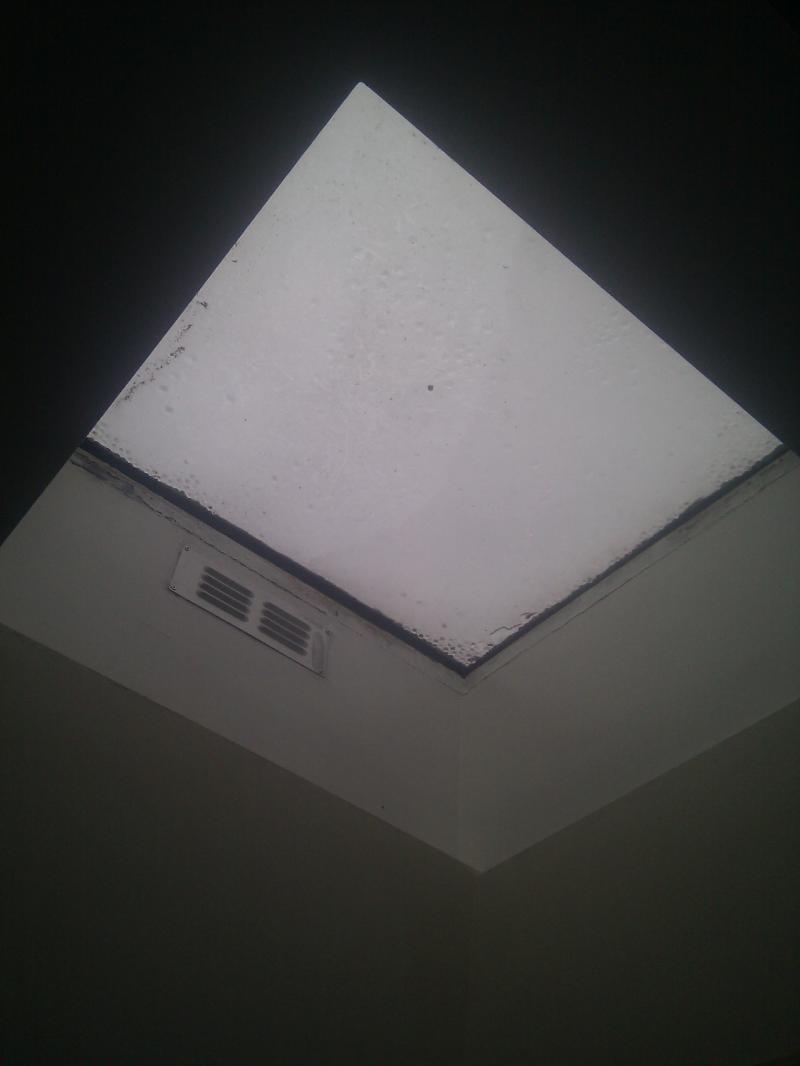Hi - we have a skylight on our landing and when we moved in 2 years ago, we had the glass repaired - it was single glazed georgian wire, and was replaced with toughened laminated glass of the same thickness (two pieces of glass sandwiching a plastic barrier) - I'm not sure if the old skylight had condensation issues, but it was broken in two and was held together by flashband!
The skylight is fine all year round, until about now when it gets covered in condensation. All of our other windows in the house are modern double glazed units with open trickle vents.
The skylight has an aluminium frame and is mounted on a 16" high wooden kerb - I assumed the problem was (and may still be!) that there is no air getting circulated in front of the glass - so last year I put two vents into the kerb about 5" below the glass to allow the glass to breathe. This hasn't made a significant difference though. My concern is the wetness up there will eventually cause the timbers to rot?
Is there anything I can do to reduce the condensation on this skylight? Would moving to a double/triple skinned plastic unit make a difference (even though they are ugly IMO!). I was thinking about adding a secondary glazing film but I don't know how effective they really are (and also fitting it to a horizontal "window" doesn't really seem that easy!!) - http://www.ebay.co.uk/itm/WINDOW-IN...den_Decorative_Accents_LE&hash=item3a87acac93
Eventually, I'd like to replace the skylight with a triple glazed glass unit, but they always seem to be £700+ and I don't have that available at the moment.
http://media.diynot.com/115000_114011_69374_88836000_thumb.jpg
The skylight is fine all year round, until about now when it gets covered in condensation. All of our other windows in the house are modern double glazed units with open trickle vents.
The skylight has an aluminium frame and is mounted on a 16" high wooden kerb - I assumed the problem was (and may still be!) that there is no air getting circulated in front of the glass - so last year I put two vents into the kerb about 5" below the glass to allow the glass to breathe. This hasn't made a significant difference though. My concern is the wetness up there will eventually cause the timbers to rot?
Is there anything I can do to reduce the condensation on this skylight? Would moving to a double/triple skinned plastic unit make a difference (even though they are ugly IMO!). I was thinking about adding a secondary glazing film but I don't know how effective they really are (and also fitting it to a horizontal "window" doesn't really seem that easy!!) - http://www.ebay.co.uk/itm/WINDOW-IN...den_Decorative_Accents_LE&hash=item3a87acac93
Eventually, I'd like to replace the skylight with a triple glazed glass unit, but they always seem to be £700+ and I don't have that available at the moment.
http://media.diynot.com/115000_114011_69374_88836000_thumb.jpg


